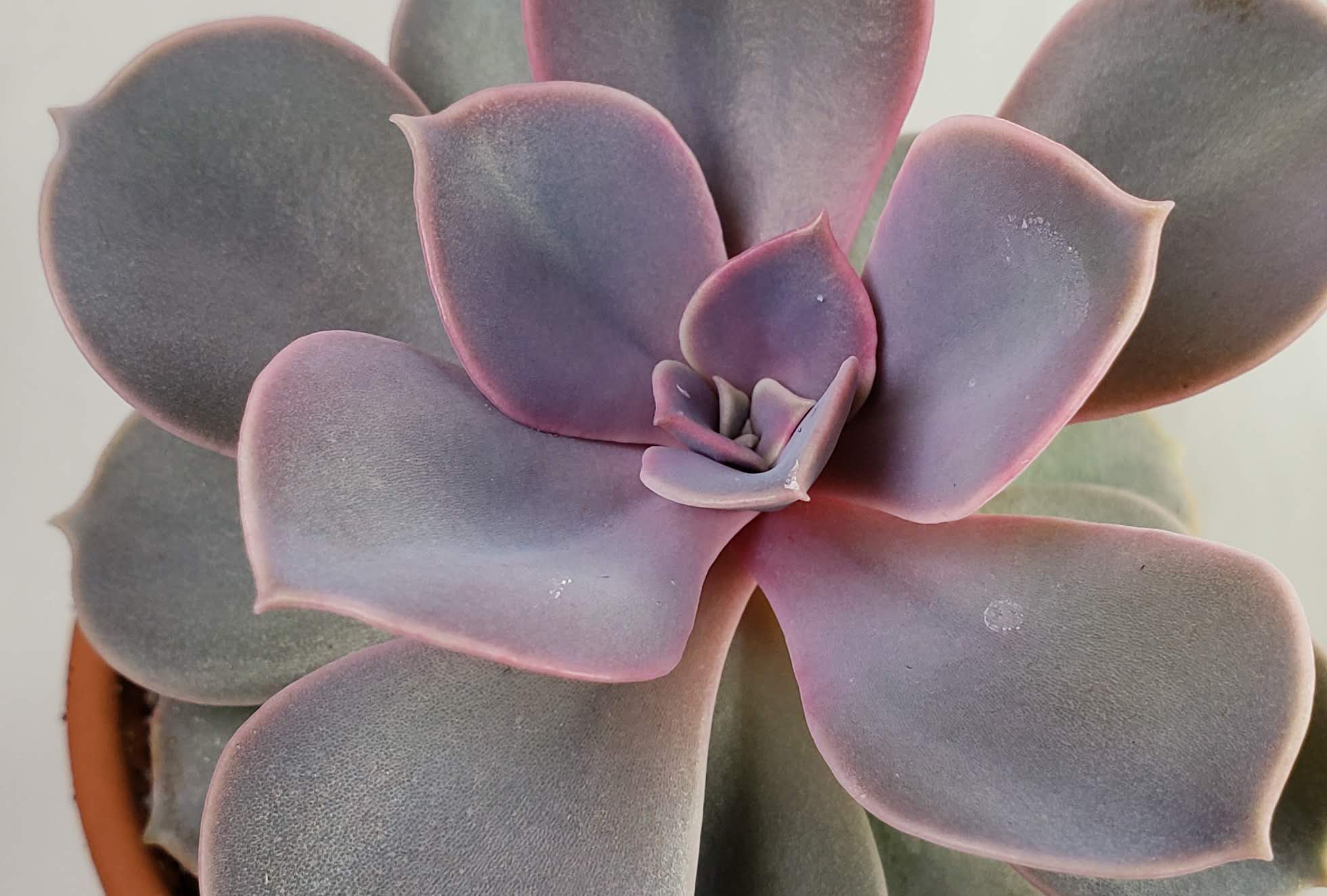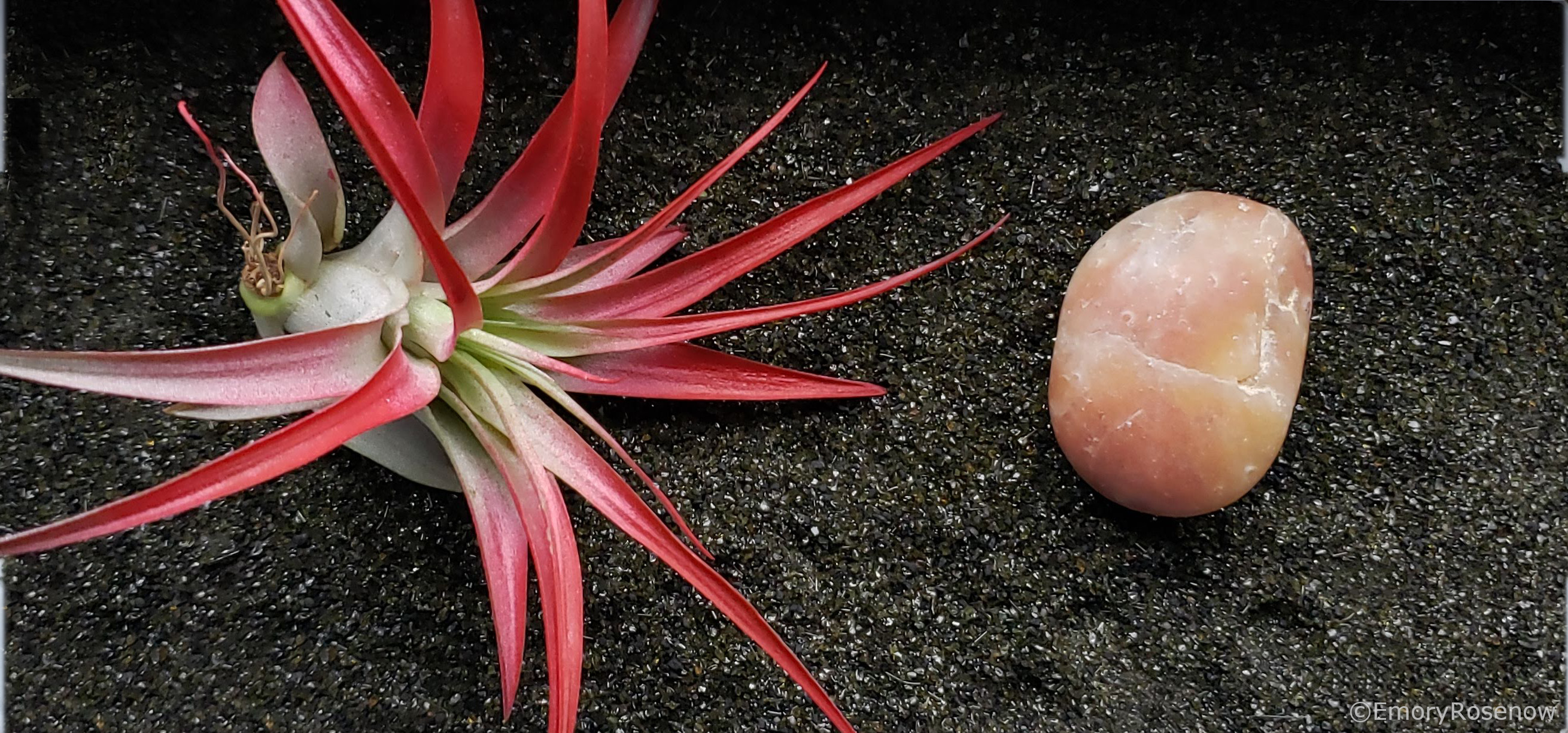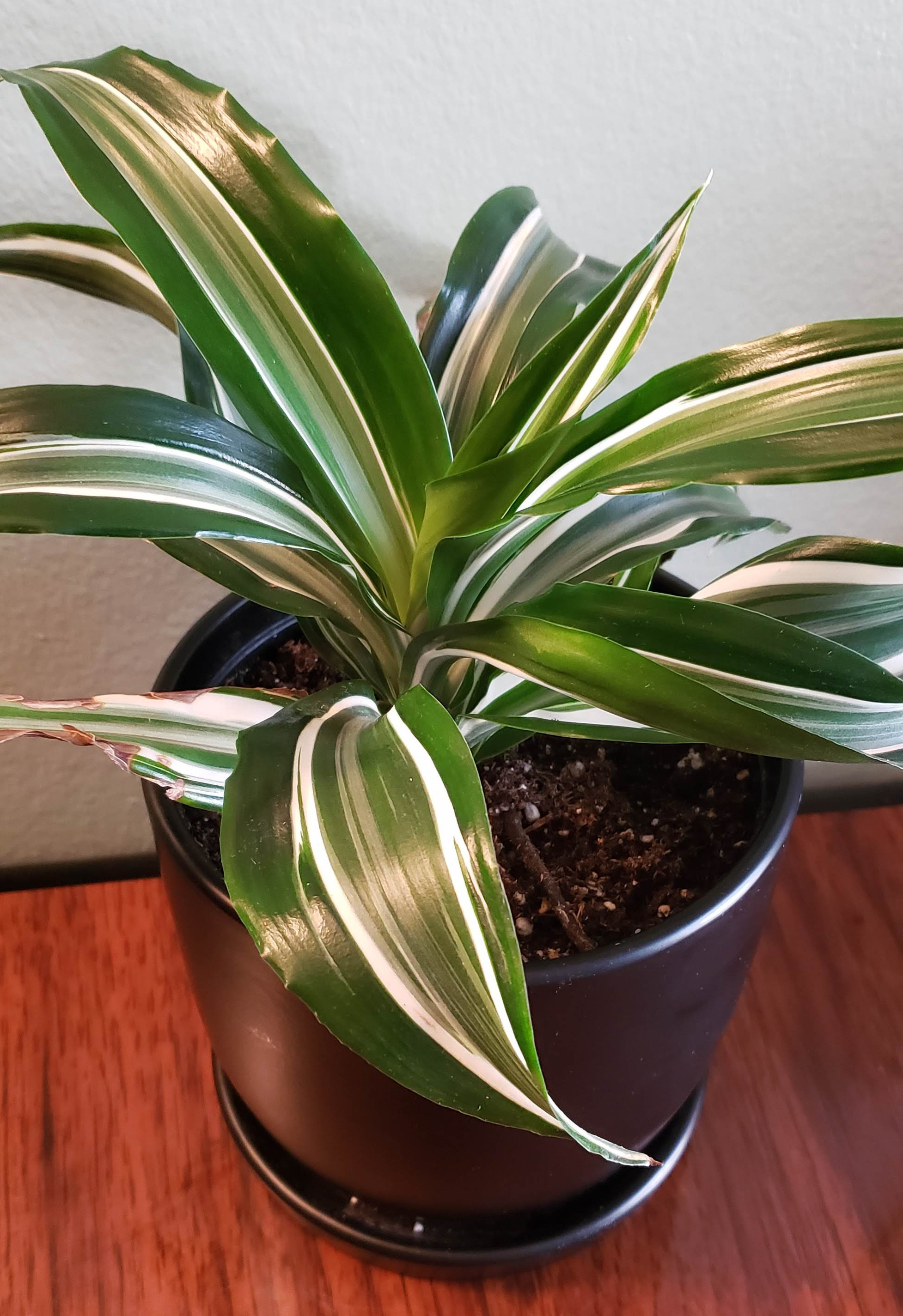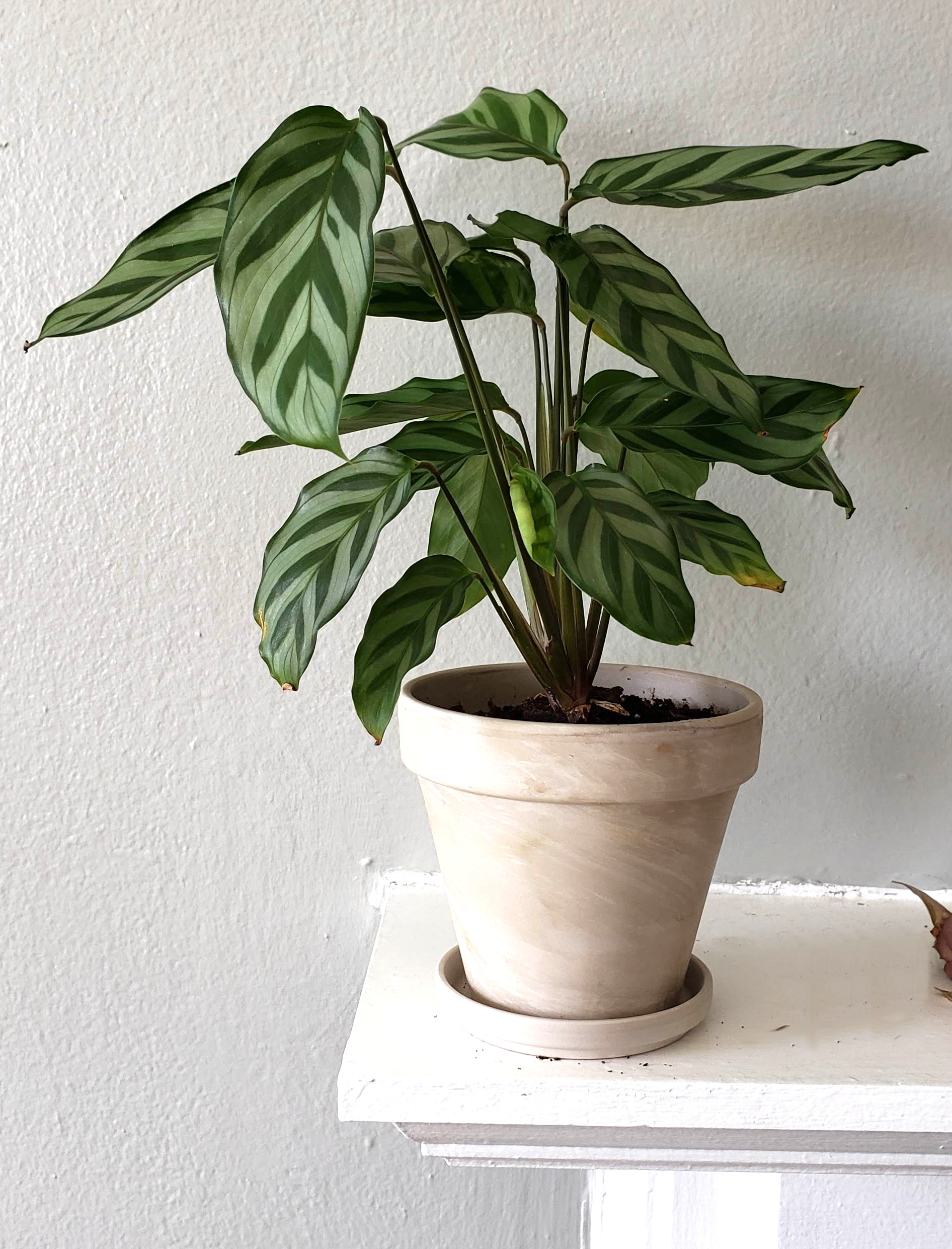Meet Guinevere, the Echeveria “Perle von Nürnburg”! This is a series of plant profiles based on the houseplants in my collection. For each, I’ll take you through some basic plant facts and care information (jump to) based on my research and personal experience!

The Science Stuff
Echeveria are easy-grow succulents. Commonly called “hens and chicks” by gardeners, they are very popular ground cover plants! There are also scores of varieties out there to meet your personal taste. Echeveria “Perle von Nürnberg” is a hybrid of E. elegans and E. gibbiflora “Metalica” (probably) developed in Germany in the 1930s.
These guys are also super simple to propagate. Just gently pull off a healthy leaf, set it on the soil, and you’ll probably have a new plant in a few weeks. Alternately, you can replant the top of a plant: cut off the top few inches, clear the leaves off of the bottom inch or so, and stick that puppy in some soil. Done. This method is great if your plant didn’t get enough light and has gotten leggy. You can save the plant, and fix her look!
One thing you don’t want to do is touch the leaves of an Echeveria “Perle.” They have a very delicate waxy coating that will come off at the slightest provocation. Use care when handling!

Echeveria are not on the ASPCA’s list of toxic plants.

Guinevere the Echeveria
I am a big fan of folklore and mythology, which you might start to see with some of my plants’ names. Guinevere, as you may have guessed, is named for the Arthurian queen (whom I think medieval writers did pretty dirty). But don’t worry – I haven’t separated her from her court. She lives on a sill with other inhabitants of Camelot.
Care
- Water: As with all succulents, Echeveria don’t like to be wet. Let the soil dry completely between waterings, and then water by thoroughly drenching; water should be running out of the drainage hole. This means that you won’t have to water as much in winter, when cooler temps plus less light means the soil dries slower! In addition, try to avoid watering on the leaves; water can easily get trapped, causing rot.
- Light: Yes! Echeveria love light! And without sufficient light, they can start to lose some of their beautiful colors. For instance, “Perle” will start to lose her signature pink blush. Additionally, low light will make your plant etiolate, or grow very leggy in its quest for more light. Find a sunny spot, such as in the sill of a south-facing window (assuming you’re in the Northern Hemisphere).
- Temperature: In contrast to most other succulents, Echeveria are relatively cold-hardy. They can even withstand temperatures down to freezing for limited periods of time! But they grow better in warmer temperatures, around 65–75°F/18–24°C (50°F/10°C in winter)
- Humidity: Low. Very high humidity and/or wet soil can start to rot your poor little Echeveria.
- Food: If you wish, feed with a diluted fertilizer every month or so in the growing season. I’ve read that younger plants are nitrogen sensitive, so try to limit that.
- Container: Well draining soil is a must. Use a cactus mix, or make your own by mixing standard potting soil with perlite 1:1. It’s also a good idea to grow these cuties in unglazed terra cotta, to maximize drying. And, of course, make sure there’s a drainage hole! Additionally, make sure the bottom of the plant is clear from old leaves to prevent any fungal growth.

My Thoughts on Echeveria “Perle”
I’m in love with this plant. I think she’s the prettiest little thing, and I confess that sometimes I just sit and stare at her (she’s a plant, she doesn’t mind, OK). Echeveria are also super easy to care for, if they get enough light.
Like this? Check out some more plant profiles!




